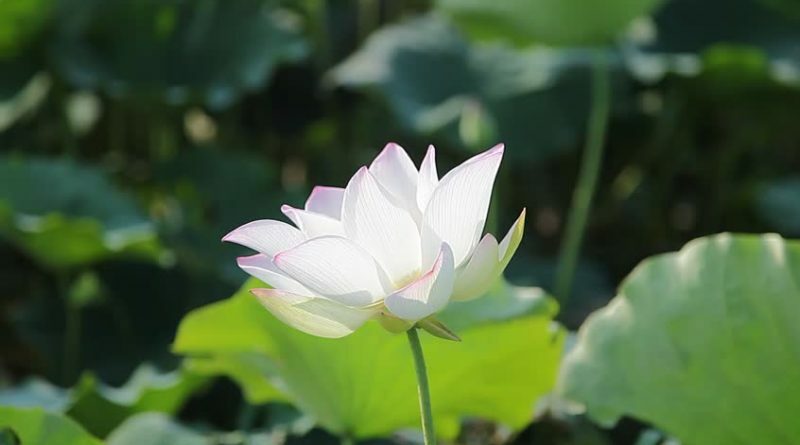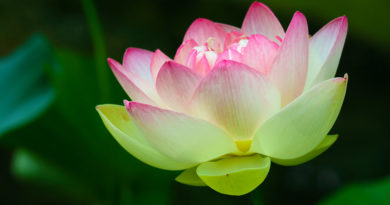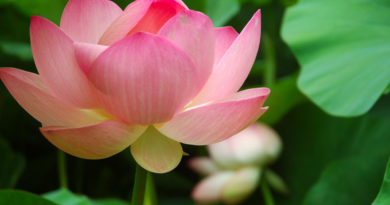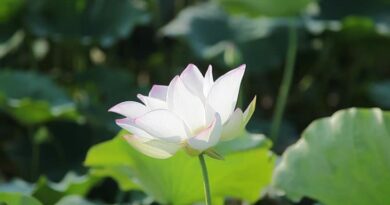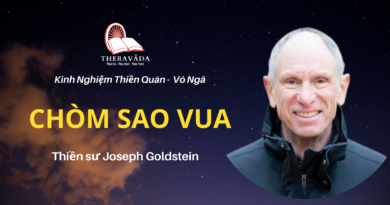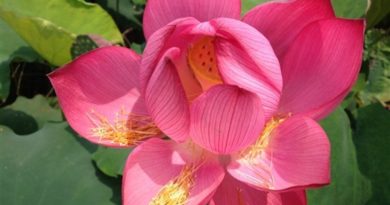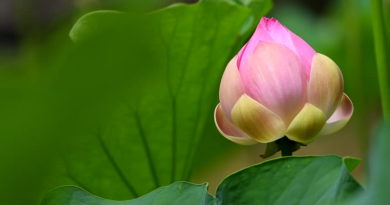Dissent And Protest In The Ancient Indian Buddhism – Chapter Iv: Dissent And Protest In The Second Buddhist Council (eng)
DISSENT AND PROTEST IN THE ANCIENT INDIAN BUDDHISM – CHAPTER IV: DISSENT AND PROTEST IN THE SECOND BUDDHIST COUNCIL
I – General view:
I have already defined the term Dissent and Protest as an organized expression of people against the existing social, religious, economic and political doctrine or practice. In this Chapter, I am going to investigate causes of discontent among monks which led them to hold the Second Council. I am of the view that investigation of this concept will be helpful to understand the circumstances in which the ‘schism’ occurs in Ancient Buddhism.
II – The historical of Second Buddhist Council:
According to Pāli tradition of the Cūlavagga, Khandaka XII, a century after the Parinibbāna of the Buddha, the Second Council was convened by 700 Arahats at Vālukārāma of Vesālī (Sanskrit: Vaisāli) during the time of king Kālīsoka (Sanskrit: Kālāshoka).[1] It is said that the Vajjian monks of Vesālī, usually called the easterners, who were in the habit of practicing Dasa Vatthūni – Ten Points which were regarded as unorthodox by the westerners.[2] Kākandakaputta Yasa of Kosambī happened to notice during his stay at Mahāvana in the Kūṭāgāra hill of Vesālī that the Vesālian Bhikkhus declared as permissible Ten practices which were not in conformity with the Vinaya rules. On one Uposatha day, the Vajjian monks placed a copper bowl with water in the midst of the Saṁgha and asked the lay disciples to contribute there some gold and silver coins (kahāpanas) for the need of the community. The Vesālian Bhikkhus also tried to tempt Thera Yasa to share the money with them, which he had refused with thanks. He openly protested against this and asked the donors not to offer any money as the use of gold and silver was strictly prohibited in the Vinaya.
At this attitude of Yasa, the Vajjian monks became very angry and imposed on him the act of expiation (Paṭisāraniya kamma)[3] for preaching to the laymen without mandate. This consisted in asking the insulted persons forgiveness. Accordingly Yasa went to the laity with a messenger who was appointed to go with him but instead of begging pardon Yasa defended and reconfirmed his point of view before the laity of Vesālī by quoting the Master’s instructions codified in the Vinaya rules. The laity were convinced by the advocacy of Yasa and they considered the Vesālian bhikkhus as offenders. This increased the fury of the offending monks who pronounced again on Yasa the act of suspension (Ukkhepaniya Kamma)[4] for not acknowledging his offences.
After the sentence of excommunication from the Saṁgha, Yasa then fled to his native place Kosambī from there he attempted to form a party of monks supporting his views. He messengers to the monks of Avanti, west and south India inviting them to assemble and decide the question ‘what is true what is false’. Even more, Yasa personally went to the venerable Sambhūta Sānavāsi who then resided at the Ahogangā hill. In the meanwhile, in response to his invitation, sixty Arhats from Pāṭheyya, eighty-eight Bhikkhus from Avanti and the Decanal assembled on the Ahogangā hill at this occasion. The assembled monks thought that the problem was not easy and should be referred to the Venerable Revata of Sureyya who was then considered the chief of the Saṁgha. Revata heard all this with his divine ear and being not willing to intervene he started traveling down, one place to another. On the advice of the distinguished Thera Sambhūta Sānavāsi, venerable Yasa then placed the issue of ten points before Revata, one by one, and after bringing up each and every point, Revata declared them all as invalid.
Meanwhile the Vajjian Bhikkhus were not idle. They tried to have Revata on their side offering him a rich present in order to forestall of Yasa’s mission; but they failed to win him over. At last the Vajjian Bhikkhus importued Uttara, the pupil of Revata to accept the presents bowl, robes and other valuable requisites of monk. [5] It is said that Uttara who was weak-minded fell a victim to the delegate’s flattery and agreed to speak on their behalf to his master, but this produced no result.
With the Thera Revata’s proposal, the Saṁgha went to Vesālī to settle the matter at the seat of original trouble. The Venerable Sabbakāmi who had already been living at Vesālī, received Revata’s visit followed by Sambhūta Sānavāsi with great enthusiasm.
So the business of the Council began with 700 Arhats consisted of the committee of a Jury with the financial support by Kālāshoka at Vālukārāma. Sabbhakāmin was questioned of each of ten points which were rejected in turn on the basis of the Pātimokkha and the Mahāvagga of the Vinaya Piṭaka. The questions settled were placed again in the full assembly for information of other participants. Thus the Ten practices had been fully explained and unanimously condemned at this Council. The Synod was concluded after having been referred to as the “Vinaya Sanghīti” of seven hundred Theras during the eight months at Vesālī. The rules of the order and the faith of the Sāsana was again settled and vindicated.
III- Ten indulgences in Pāli and Tibetan sources:
(i)- The Pāli Cūlavagga contains the following the Ten Points (Dasavatthuni):
- Singilona Kappa- The practice of putting salt in a horn vessel in order to season unsalted food when received is allowable. Salt like other edibles is condemned in the Pācittiya rule No.38 of the Bhikkhu Pātimokkha.
- Dvangula Kappa-The custom of taking mid-day meal, even after the prescribed time when the shadow (on the sun-dial) is two digits wide. It signifies that solid food might be taken not only up till noon; but till the sun throws shadow two inches long. This rule is against Pācittiya No.37.
- Gāmantara Kappa- The practice of going to a neighboring village and taking a second meal there in the same day if invited and the place is far away from the monasteries, is allowable. It is contrary to the Pācittiya No.35 which prevents a bhikkhu from taking second meal in the same day (offence of over-eating).
- Avāsa Kappa- During the ceremony of ordination (Upasampadā), the confession (desanā), imposition of punishment (mānatta) re-acceptance (abbhāna) etc.; the Saṁgha be allowed to hold separate Uposathas in various places within the same campus. The Mahāvagga (11,8,3) mentions that all the bhikkhus of same monastery should hold one Uposatha in the Simā (Parish) within the campus of the monastery.
- Anumati Kappa- An ecclesiastical act may be allowed on the ground that the consent of other bhikkhus would be taken afterwards when they come. According to Vinaya rules, the consent of the Saṁgha is necessary in order to pass an act, but the Vajjian monks wanted that their consent may be obtained after the act is passed. This also amounts to a breach of monastery discipline according to the Mahāvagga (IX,3.5).
- Ācīnna Kappa- The tradition followed by the Upajjhāya (teacher) may be taken as precedent and be accepted. This was then an excuse for relaxing the Vinaya discipline. This rule also infringes the monastic order as mentioned in the Mahāvagga (IX,3.5).
- Amathita Kappa – The practice of drinking butter, milk and liquid etc. which is not in a state of curd, is permissible. This practice means that a bhikkhu mat take whey, liquid food after noon. This also amounts to a breach of monastic discipline, Pācittiya No.35 of the Bhikkhu Pātimokkha.
- Jalogiṁ pātuṁ-The custom of drinking palm juice which has not yet become toddy or a strong drink, be allowed to drink. This practice is an infringement of Pācittiya rule No.51 which forbids any intoxicated drink (Surā and meraya).
- Adasakaṁ nisīdanaṁ – A mat without fringes to sit upon be permissible. This is not allowed vide Pācittiya rule No.89 which indicates the mat permissible for the monks.
- Jātarūpa-rajataṁ- A monk can accept gold and silver. It implies that the gold and silver might be received by the members of the order which is in contravention of the Nissaggiya Pācittiya No.18 of theBhikkhuPātimokkha.[6]
The Ten Points of the Vajjian monks which were the main cause of the main cause of the convention of the Second Council are not reported in the same manner in the traditions of the different schools. These traditions represent several variations. The Ten Points as enumerated and interpreted in the Pāli Cūlavagga do not agree with those narrated in other traditional accounts in which new terms are used and different interpretations are given.[7] Due to the limitations of space, we are confining ourselves thus to narrate here in brief the Vinaya Ksudrakavastu of the Tibetan as specimen of the different traditions.
(ii)- The Vinaya Ksudrakavastu [8] the discipline code of the Mūlasarvāstivādins gives the following Ten transgressions:
- The exclamation of astonishment (“aho”)- The Bhikkhus of Vesālī practiced as lawful the exclamation ‘aho’. They performed religious observances and made them legal with the exclamation “aho”. Having rendered legal the exclamation “aho”, they performed an ecclesiastical act illegally in an incomplete saṁgha perhaps in order to keep up the number of deviations as ten Mahīsāsakas and the Sarvāstivādins borrowed one point from Mahādeva’s five points and made it first of their list, viz., “Exclamation of ‘aho”
- Performing the act first and then getting approved- The dissidents performed religious functions and afterwards persuaded the monks in attendance to approve the same. Thus they got approved the acts that had performed by the monks who were present at the time of performance of act. Thus they illegally got approved the act done by the incomplete Saṁgha. This has resemblance with the ‘Anumati Kappa’ of the Vajjian monks (see No. 5 indulgence above). In the Tibetan translation, this transgression has been translated as “rejoicing” which is certainly not correct. In this connection, N. Dut remarks that Bu-ston or Obermiller was misled by the Tibetan rendering of the Sanskrit word ‘anumodanā’ which, though derived from the root ‘mud’, does not carry the meaning ‘rejoice’. Anumodanā in Pāli means ‘acquiescence to an act done by the Saṁgha in one’s absence’[9]. This is also an instance of anomaly of converting a Prakrit word into Sanskrit. It is not known what was the original Prakrit word, but evidently the Pālists made it anumati. In any case, the interpretations offered by the different Vinaya Texts are similar, i.e., getting an ecclesiastical act performed in an incomplete assembly and approved later by the absentee members.
- Digging ground- The dissidents considered it admissible for the Bhikkhus to live on agriculture, digging up the soil with their own hand. This point is seen only in the Sarvātivādin Vinaya.
- Using the Sacred Salt- Mixing the salt that is to be stored for lifetime with that which is used in general in making it thus an object of use[10]. This act is seen only in the Sarvāstivādin Vinaya.
- Eating on the way- The Bhikkhus, having proceeded a yojana or a half, could assemble and eat on the ground when they were on tour.
- Taking food with two fingers- It means that the food which has been left from the previous meal, could be taken again with two fingers.
- Eating not at due time- After mixing a full measure (drona) or milk with a full measure of curd and then eating the preparation at undue time is permissible.
- Taking intoxicating drink – The Bhikkhus could take wine after leech had sucked their blood. This drinking could be permitted on account of illness.[11]
- Making a new rug – Without stitching to it a patch of an old one is allowable. It also infringes the Nissaggiya Pācittiya rule No. 15 of the Pāli Pātimokkha.
- Begging for gold and silver-The Vajjian monks used to appoint an alms-bowl with fragrant spices, put it on the head of Sramana or on a table or in a place or in a narrow passage at the four cross-road and say: ‘This is a sublime vessel, if you offer gift here, you will reap great meritorious deeds’ accordingly, the laity filled the bowl with gold and silver, which was enjoyed by the bhikkhus of Vesālī.
IV- An observation of the Ten Points:
If we investigate The Ten Points carefully, we can see that the main point of these rules focus on food or material things. There is nothing concerning about the doctrines or leadership in the Saṁgha; therefore, the question of economic condition of Vesālī arises as the major aspect which influences the life of the Vesālī monks. If we understand this issue, the Ten Points which cause the protest in early Buddhism may become the tendency of development in Buddhism.
Let me give the geography of Vesālī. It is said in the commentary that at the time of the Buddha the city of Vesāli was encompassed by three walls at a distance of a gāvuta from one another and that at three places there were gates with watch-towers and buildings. From Vinaya Texts II we find that Vesāli, at that time, was an opulent, prosperous and populous town. It had 7,707 storied building, 7,707 pinnacled building, 7,707 ārāmas or pleasure grounds, and 7,707 lotus ponds Vesāli was well provided with food, the harvest was good, alms was easy to obtain and one could very well earn his living by gleaning or through favor.[12] Now, one can conclude that the Ten Points occur due to the prosperous economy of the Vesālī. But the old monk Thera Yasa, a resident from Kosambi (Sanskrit: Kausāmbi) to visit Vesāli, opposes the practice of Dasa Vatthūni, and declared them illegal and immoral.[13] How he shows his disagreement toward this issue may cost the discussion here? According to Sumangal Barua, he openly protested against this and asked the donors not to offer any money as the use of gold and silver was strictly prohibited in the Vinaya.[14] Here we do not see the food problem, which are discussed in the Council. And what reactions of Vesāli monks on the emerged problem declared by There Yasa? The Vajjian monks pronounced on him the penalty of paṭisāranīyakamma and when he defended his position before the laity, punished him with ukkhepanīyakamma which virtually meant his expulsion from the Saṁgha.[15] The Vajjian monks seem to be unified on this issue. Perhaps that is the nature of Licchavis people.[16] The Mahāparinibbāna Suttanta of the Nikāya speaks of the existence of concord and amity among the Licchavis and in the Saṁyutta Nikāya the Buddha says that the Licchavis were strenuous and diligent, zealous and active.[17]
As history records, the conflict between the Vajjian monks and Thera Yasa causes the Second Council separately which divided the Saṁgha. First, we discuss about the movement of Thera Yasa and his role in the Second Council.
As we know that, after expelling from the order of Vajjian monks, Yasa was back in his place immediately and seek the local monk to support his views on The Ten Points practiced by the Vajjian monks. At the same time, he sends his pupils to invite the Western and Southern monks and he himself goes to the place of Sambhūta Sānavāsi, the well-known monk, and requests him to declare the Ten Points as illegal and violation of the Vinaya. At the advice of monks from west and south, who realize that the problem is serious with supporting from thousand monks of Vajjian monks, Yasa comes to see the highly respected monk Thera Revata of Sureyya who first avoids the dispute but finally accept the request of Yasa and the Saṁgha and at the guidance of Sambhūta Sānavāsi, the monk places one by one to Thera Revata and he declares that The Ten Points are illegal.
Now, at the suggestion of Revata, the monks proceeded to Vesālī in order to settle the dispute at the place of its origin. There seven hundred monks met at a Council under president ship of Venerable Sabbakāmī who had already been living at Vesālī. The unanimous verdict of the assembly declared the conduct of the Vajjīan monks to be unlawful.[18]
V- Some problematic issues of Council – The motive behind the Council:
As already discussed, the behavior of Thera Yasa towards the practicing The Ten Points by Vajjian (Pāli: Vajjī) monks results of dismissing him from the local monks. To reply this expel, he himself wanders far and near to seek the support of the monks from different places to declare what he said in Vesālī is correct. It means that the motive behind the Council comes from individual plus non-resident monks of Vesālī although it is said that the venerable Sabbakāmī, the local monk, as a join chief of the Council. The present of this monk also raises the question of his weak-deciding ability as he witnesses The Ten Points have been practiced by his local monks. The question is that is it the true as history records him as highly respected monk? Or Thera Yasa and other opposed monks chose him as a join leader due to his residential monk? The reason for protesting from monk community in Vesālī perhaps comes from unappreciated behavior of Thera Yasa and non-resident monks from west and south. It may be one of the reasons why the value of Second Council is less value in history of Buddhism. And it definitely leads to the controversy of Second Council among scholars.
Some scholars are of the opinion that in the Second general Council of Vesālī, the conflict was restricted to a small number of the members of the Saṁgha and in the Pāṭāliputra Council, according to Northern traditions, it was spread widely to various Saṁghas. Between the time of the two Councils (i.e., the one of Vesālī held during the reign of Kālāshoka to discuss the ten un-Vinayic rules and the other of Pāṭaliputra convened in the days of Nanda or Mahāpadma regarding the Five Points of Mahādeva), the Saṁgha had been mainly divided into two sects: Sthaviras and the Mahāsanghikas. The Pāṭaliputra Council tried in vain to bring the unity in the Saṁgha by the intervention of royalty. But it produced no effect and the result was an official recognition of both the parties. Also Mahādeva’s Five points were discussed in this Synod led to further cleavage.
As the result of the Council of Vesālī, some of the Vesālian monks divided themselves from the original Saṁgha of the Elders and afterwards, they organized a new sect of their naming a ‘Mahāsaṁghika school’. This school was in all probability the same as the Mahāsaṁghika of the Dīpavaṁsa tradition.[19] No doubt, this party reflected an open schism dividing the whole community, thus the disruptive forces were at work in full swing during and immediately after the Council of Vesālī. Then the Saṁgha could not remain a single homogeneous body. As a consequence, within a short time, various schools came into existence with slight differences relating to the doctrines and the disciplinary rules.[20]
On the Vesālī affairs, Yuan Chwang[21] tells us that Vesālī and Pāṭaliputra were the chief flourishing centers of the Mahāsaṁghikas. Fa-hien confirms that he also found in these localities, the adherents to the Vinaya of this school. It is true that some of the Sthaviras also lived together with the Mahāsaṁghikas. The liberal views of the Mahāsaṁghikas were undoubtedly not acceptable to the orthodox Sthaviras.
(i) – The controversial leadership of the Council and the views of Scholars on historicity:
There are different views on the leadership of the Council among the traditional sources. For instance, the Cūlavagga mentions that venerable Sabbakāmī and Revata as join president of the Council, meanwhile, the Mahāsanghika Vinaya tells us that Yasa was president of the Council.[22] The proceeding of the Second Council was not analogous from the First Council and headed by a committee of referees and decided by vote. The way of chosen leadership and committee shows us that none of the monks in this Council emerged as highly respected leader which leads us to think that the Council was organized in unwell-prepared condition to fight against the so-called illegal and immoral and even the explanation of The Ten Points and history of the Council are different from many traditional sources [23] and leading the controversy in the field of academy.
The historicity of the Vesālī Council is evermore controversial than the Council of Rājagaha. Its varying accounts given in the different authorities have made difficult to draw any final conclusion on its historicity. The ten disciplinary points which the monks of Vesālī thought to be permissible but which were rejected by the general assembly of the Saṁgha are the main points of discussion and these are generally found in all traditions. Dīpavaṁsa places two versions of the Council, one being a shorter one that is found in the Cūlavagga; the other gives information about the holding of great Council of the Mahāsaṁghikas, which supplies much additional details.
The Pāli traditions place the Council just in the year 100 after Parinibbāna of the Buddha (=A.N.). The northern version generally gives the date 110 A.N. There are disagreement also on the place, reign of the king and the number of the participants. In this connection, the following names and places are are mentioned in different accounts. The number of the participants varies from 700 to 1,200,000[24] Yuan Chwang and the Tibetan Dulvā gives us some addition information about eight members of a jury which is shown in the following table:
| SI. No. | Name | Pupil of | Age | Residence (Cūlavagga) | Residence (Dulvā) | Residence (Y.Chwang) |
| 1 | Sabbakāmī | Ananda [25] | 140 | Vesālī | Vesālī | – |
| 2 | Khujjasobhita | – | 120 | of the East | Pāṭaliputra | Pāṭaliputra |
| 3 | Sālha | – | 120 | – | Sonaka | Vesālī |
| 4 | Revata | – | – | Soreyya | Sahadsha | Sa-han-no |
| 5 | Sambhūta Sānvāsi | – | – | Ahogagā hill | Māhismati | Mathurā |
| 6 | Yasa | Anurudha | 165 | Of the West | Sonaka | Kosala |
| 7 | Vāsabha | – | 120 | Of the East | Sāṁkāsya | – |
| Gāmika | – | – | – | – | – | |
| 8 | Sumana | – | – | Of the west | – | – |
As we have seen from the above table, Yuan Chwang omits the names of three Arhats, nos. 1, 7 and 8. The Tibetan dulvā omits no. 8, Sumana, but introduces a new name, Ajita who lived at Srughna. As regards the residence, there is hardly any agreement except in the case of case of Sabbakāmī and Khujjasobhita. Mahāvaṁsa [26] makes all the eight Theras contemporary of the Buddha, that is, all of them were of at least 120 years of age. The Dulvā [27] also states that all 700 Arhats who took part in the Council were the contemporaries of Ānanda. Strangely it does not refer them to the contemporaries of the Buddha. In this way the transformation of 8 Theras who had seen the Buddha as old aged arhats referred to in the above records is a gradual development of the legend of the Second Council. The Ten Points as enumerated in the Cūlavagga bear no full concurrence with the other traditions
- Oldenberg thinks that the tradition of the Second Council is historical, but in its authentic form it does not bring this Council into any connection with the collection of the Sacred books.[28]
- Kern is of the view that the Council on Vinaya at Vesālī has an historical base. It preceded, but had no connection with the schism of the Mahāsaṁghikas[29]
Poussin generally acknowledges the historical character of a Vesālīan controversy on the Ten Points of monastic discipline.[30]
Mrs. Rhys Davids holds the view that the real point at issue was the rights of individual as well as thesis of Provincial Communities as against the prescriptions of a centralized hierarchy[31]
- Hofinger has performed a formidable task of making a critical and analytical study of the Vesālī Council. He arrives at a conclusion that the code of the Vinaya does not exactly cite the 10 formulas and they are the later composition long after the quarrel[32]However, he says that the Vesālī Council convened to settle the conflict between the Vajjiputtakas and the rest of community is not a fiction.[33]He adds: the Council account is previous to the schism which separated the Mahāsaṁghikas from the Sthaviras. The legend was gradually grown and was accepted by all tradition.[34]
Demieville, on the other hand, is doubtful about the historicity of the Council in the absence of all epigraphically and archaeological confirmation[35]. He himself recognizes only the Mahāsaṁghika Vinaya out of 7 Vinayas, which places the account of the Council directly after the Chapter describing the schism (saṁghabheda).[36]
- Bareau states that the ten un-Vinayic acts of Vesālī which figure only in the Sthavira traditions are inserted in a artificial manner. The main point of issue was the acceptance of gold and silver.[37]
In fact, any one of the accounts of the Council, even the most reliable account of the Mahāsaṁghikas does not hint at a schism that was caused after. During the lifetime of the Master, Vesālī had no reputation of being a place of quarrelling monks and heresies. The Mūla-sarvātisvādin and the Haimavata traditions have not mentioned any activity associated with Yasa who played an important part in other accounts.
What final conclusion can be drawn from the above discussions and investigations of the scholars regarding the traditions of Vesālī Council? We may answer briefly that a conflict between the rigorist and the laxist, between the monasticism and modernism, between oligarchy and democracy, between Hīnayāna and Mahāyāna Buddhism begins with Vesālī Council, finally resulting schism at the Pāṭaliputra Council narrated by the Northern traditions and continued up to 1st century A.D. with emergence of many sub-sects.
In spite of conflicting materials of the narratives and the various opinions of the scholars we are of the view that the historicity of the Vesālī Council can not be doubted.
VI- Mahādeva – the Protester:
It is said that very shortly after the Second Council held in Vesālī, another Council, the Mahāsangīti took place with the attendance of 10,000 monks [38] although the problematic history claimed by traditional sources is there.[39] The major difference between the Vesālī and Mahāsangīti council is the latter raising the doctrinal problem in the concept of Arhat which is the ultimate doctrine of early Buddhism by Mahādeva. Therefore, one can say that Mahādeva is the dissenter and protester as well. Being a dissenter, he raises the controversial explanation in Buddha’s teachings, and being a protester, he makes this issue become a public issue.
It is to know that before entering the Buddhist Saṁgha, Mahādeva, a son of Brahmin merchant, was a murderer as he killed his father, an Arhat and his mother due to the affair with his mother. He was ordained by a monk in Pāṭaliputta and with the constant efforts in learning and practicing in Buddhist teachings, he emerged as the talented monk and the monks in his place, the Kukkuṭārāma Vihāra, put him at the top of the monks there. Is there any relationship between his background and The Five Points, which are mentioned below? Historically speaking, the Buddha has many disciples from Brahmin family and Angulimāla was a murderer before becoming a Bhikkhu and he himself attains the arhatship. So the hypothesis leads to the relationship between the background and The Five Points has no room in discussion.
The Five Points are followed:
- An Arhat may commit a sin under unconscious temptation.
- One may be an arhat and not known it.
- An Arhat may have doubts on masters of doctrine.
- An Arhat cannot attain arhatship without the help of a teacher.
- The path is attained by an exclamation as ‘aho’[40](cf.Kvu, II, 3&4,XI, 4),i.e., one meditating seriously on religion may make such an exclamation as ‘How sad’ and by so doing, he attains progress towards perfection.[41]
It is to believe that under the interference of the ruling king probably Kālāsoka, The Five Points were put one by one and decided by vote. Due to the majority number of monks who is said to be close to Mahādeva, the dispute was not solved and divided the Saṁgha into two main schools: the Sthavira and Mahāsanghika school. The majority of bhikkhus who held Mahāsangīti were called Mahāsanghikas and who supported the orthodox views were Sthaviravādins.
Here we see the collapse of the system of vote in the Buddhist Saṁgha as the ultimate solution to tackle the thorny issue. Normally speaking, the holy monks in any religion in general and in Buddhism in particular are always less in number than the ordinary one. If we consider Mahādeva and his monks as the protesters, it is because of the failure of organization in Buddhist Saṁgha which claims that whenever the Saṁghabheda occurs, monks should assemble and settle on the matter in favor of majority.
The main business of the Council of Vesālī was to examine the validity of Ten Indulgences (dasavātthuni) of a section of vesālian Bhikkhus which transgressed the Rule of Monasticism. After the Council, according to Northern tradition, the conflict was spread widely to various Saṁghas, this dissension in the Saṁgha became wider which could not remain a single homogenerous body, the Saṁgha mainly devided into two sects Sthaviras and Mahāsaṁghikas. Ultimately giving rise to eighteen sects within a centuary after the Council.
We may come to the end of this Chapter without mentioning the Third Council which does not mention in Tipiṭaka and the Northern Buddhism tradition also neglects it. So far, there have been many works related to the schism in early Buddhism with the strong argument to accuse the Ten Points practiced by Vesālī monks and the Five Points of Mahādeva. We cannot deny some serious works done by well-known scholars, but we also can recognize the fact that very few works have approached these issues by using the evident sources from Vinaya which, the author believes that, records all information of the different Buddhist sects.
As we all know that Ten Points practiced by Vesālī monks and the Five Points of Mahādeva and the cause of the Second Buddhist Council are relevant to the Vinaya. One can say that without study from Vinaya, the works concerning Buddhist schism, will limit the result. I would like to elaborate some approaches related to these issues. Exploring information of the Vinaya will be the aim of the next Chapter.
-ooOoo-
[1]. BCDB, Dr. Sumangal Barua, p.47.
[2]. AHOIB, S.R.Goyal, Book Two, p.3.
[3]. The punishment of Paṭisāraniya kamma is inflicted on a bhikkhu who uses the harsh words and does not behave properly with the lay devotees and thus hurts the feelings of the righteous householders.
[4]. The punishment of Ukkhepaniya Kamma is imposed upon a bhikkhu who refuses to confess his faults or to undergo the punishment for transgression. If he does not give up his false views in spite of repeated instructions, he deserves the punishment of Ukkhepaniya Kamma. He will be temporarily suspended from the Saṁgha.
[5]. CV, p.302
[6]. BCDB, Dr. Sumangal Barua, pp. 50-51.
[7]. Researches sur le Boudhisme Traduit due Russe par, I.P. Minayeff, Paris 1894, p.44 ff
[8]. History of Buddhism, Bu-ston, Heidelberg, Institute fur Buddhismus-kanda, 1932, op.cit., p.91
[9]. BSI, N. Dutt, p.20-21
[10]. Asti āyumandranāṁ sringapuṭaṁ lavanaṁ yāvajjīvaṁ dhirisṭitamh. Cf. Gilgit Manuscripts, ed. Nalinaksha Dutt, Vol.III, Calcutta, 1942, p.xiii
[11]. The Dharmagupta and Mahsīsasakas says: “to drink, beyond the time is allowed, a mixture of cream, butter, honey and sugar”.
[12]. GEB, Bimala Churn Law, pp.12-13.
[13]. AHOIB, S.R.Goyal, Book Two, p.3.
[14]. BCDB, Sumangal Barua, op.cit.p.47.
[15]. AHOIB, S.R.Goyal, Book Two, op.cit.
[16]. The Mahāvastu states that there were twice 84,000 Licchavirājās residing within the city of Vesālī and the Buddha once visited Vesālī invited by the Licchavis. Quoted at Bimala Chun Law. pp.12-13.
[17]. GEB, Bimala Churn Law, p.13.
[18]. AHOIB. S.R.Goyal, Book Two, p.4.
[19]. Ibid.
[20]. Ibid. p267-269
[21]. Ibid.
[22]. BCDB, Dr. Sumangal Barua, p.50.
[23]. BCDB, Read more in p.53 cff.
[24]. Dīpavaṁsa, 5, p.120
[25]. Mahāvagga, IV, p.57-59
[26]. Ibid.
[27]. The life of the Buddha and the Early history of his Ordrer, W.W. Rockhill, Vanarasi. p.179
[28]. Mahāvagga, p.xxxi
[29]. Manual of Indian Buddhism, H. Kern, Delhi 1974, p.109
[30]. The Buddhist Councils, Encyclopaedia of Religion and Ethics, Vol. IV, p.183
[31]. The Śākya or Buddhist Origin, New Delhi, 1978, p.355
[32]. Etude sur le Concile de Vaisālī, M. Hofinger, p.218
[33]. Ibid. p. 153-155
[34]. Ibid.
[35]. L’Origine des Sectes Bouddhigques d’apares Paramartha, PauDemieville, Bruxlles, chinois et Bounddhiques, 1932, p.258
[36]. Ibid. p. 67
[37]. Les Premiers Councils Bouddhiques, Andre Bareau, Paris, p.67
[38]. Some sources from Chinese and Tibetan testify the split of the second council from the Five Points of Mahādeva, not from the Ten Points.
[39]. The date of the council are different from Buddhist sources, for instance, 100 A.N. according to Mahāprajñāpāramita (Upadesa) Śāstra; 116 A.N according to Samayabhedoparacanacakra; 137 A.N. according to Nikāyabhedavibhangavyākhyāna, 2nd list and 160 A.N. according to Nikāyabhedavibhangavyākhyāna, 1st list.
[40]. Aho is explained the unusual sound for a meditator.
[41]. BCDB, Dr. Sumangal Barua, p.65.cff.

